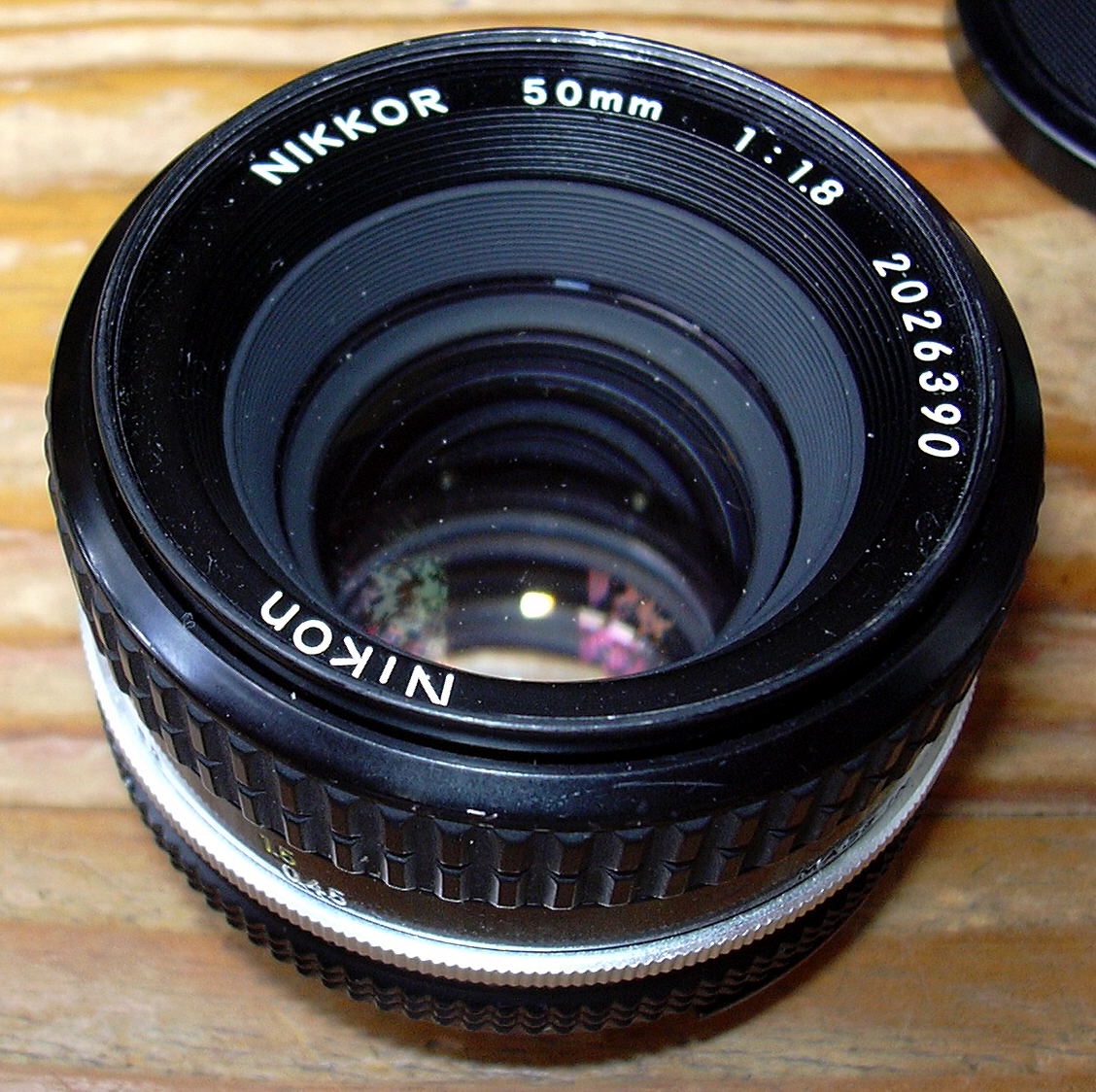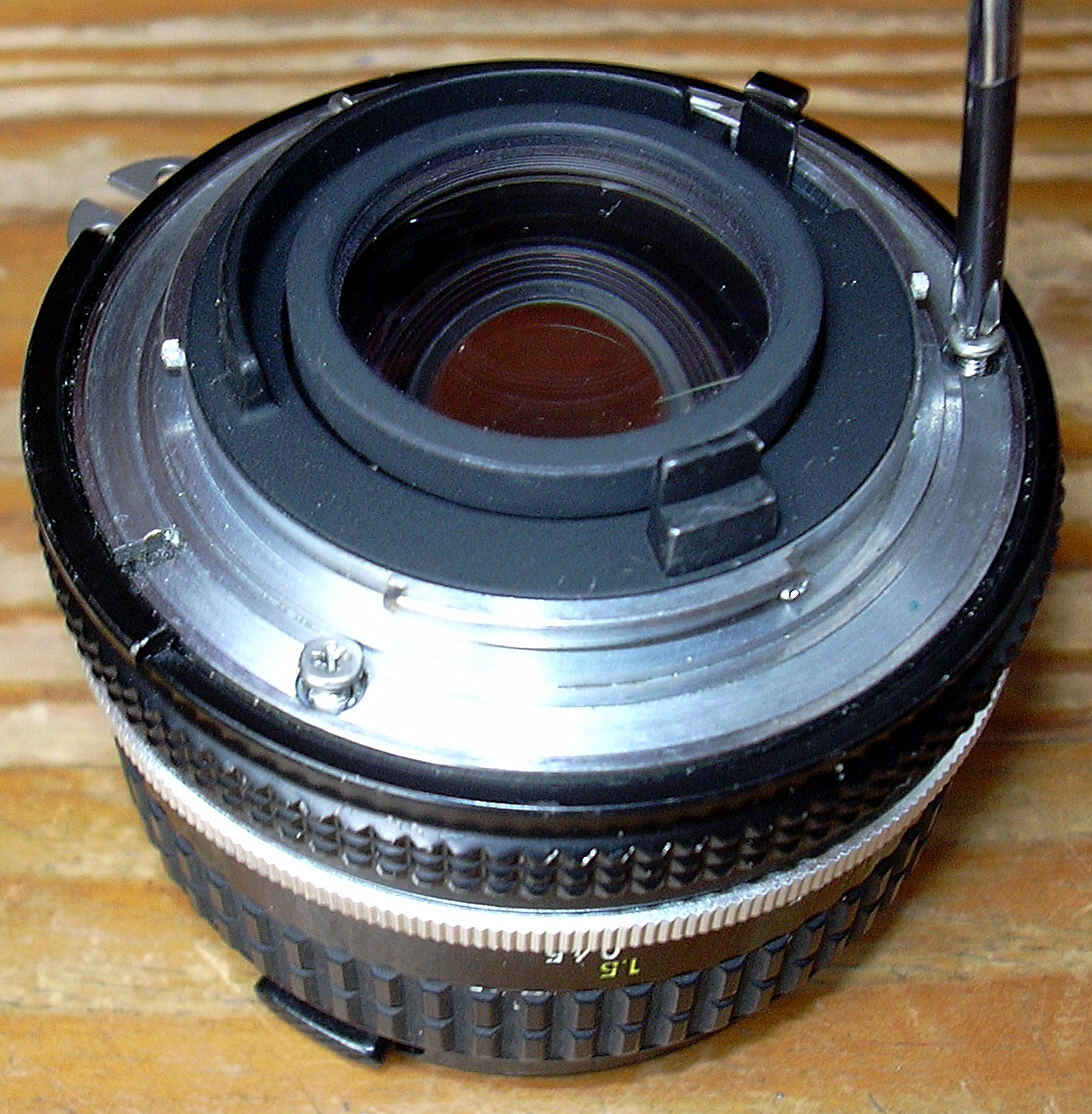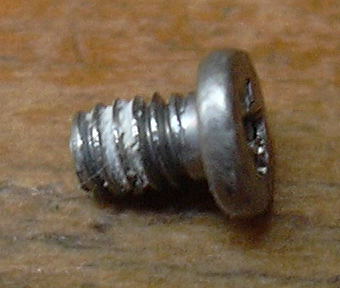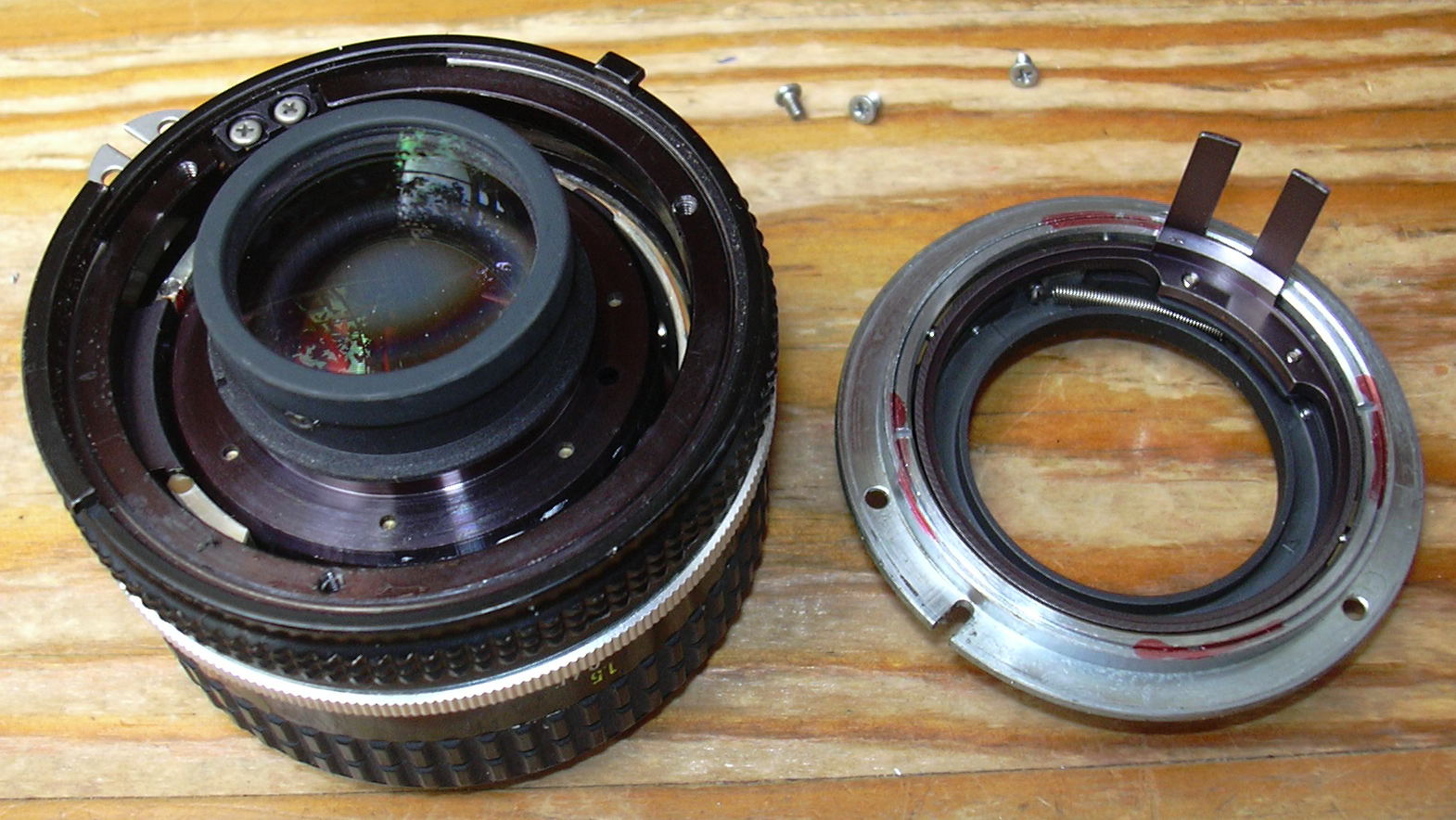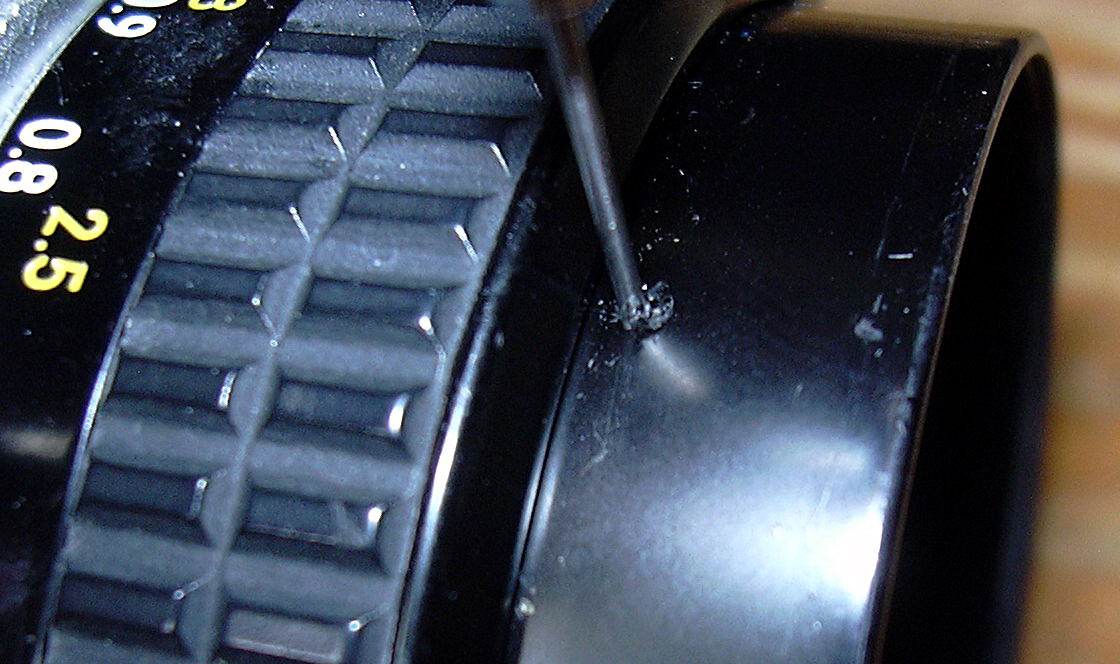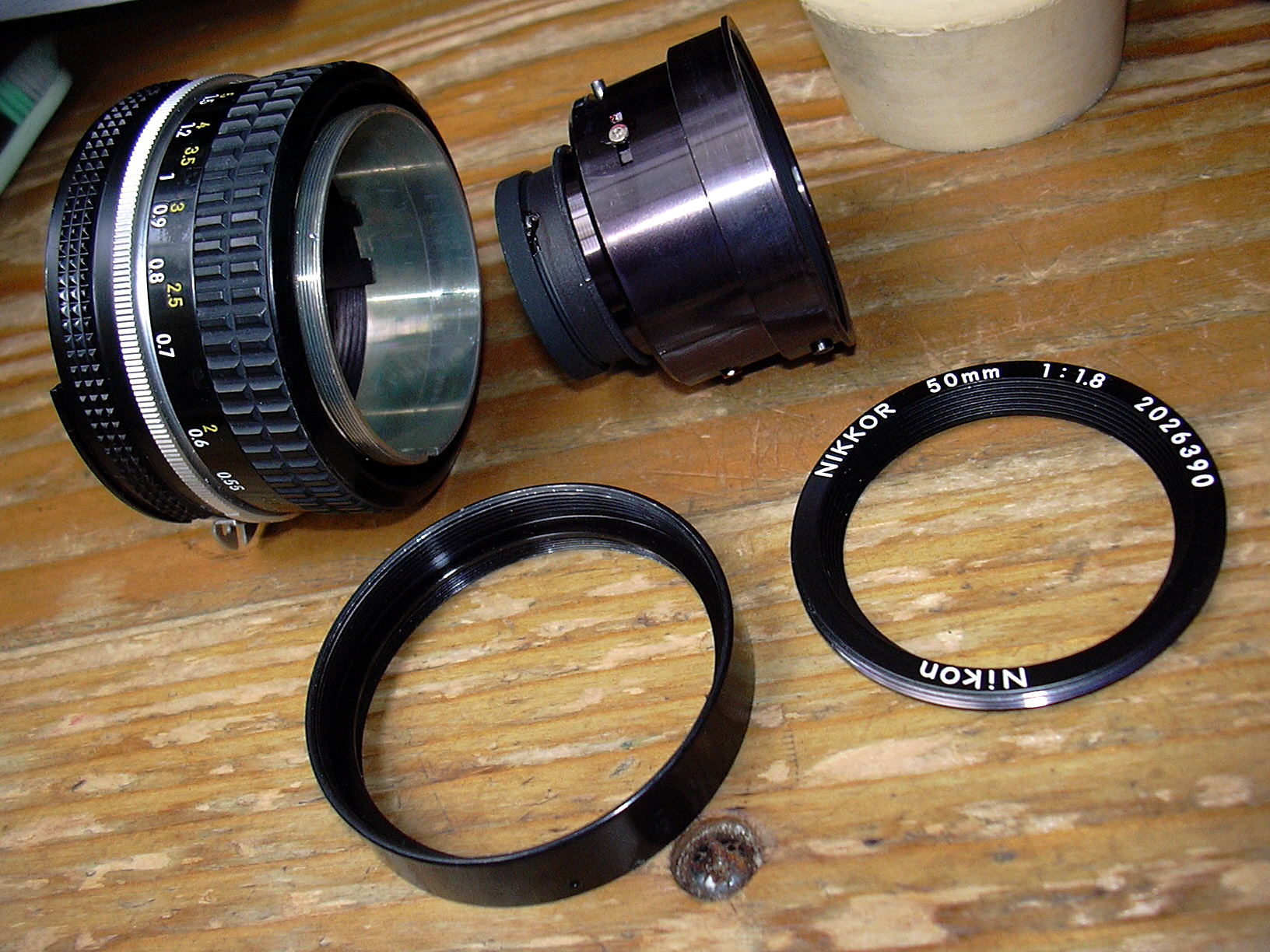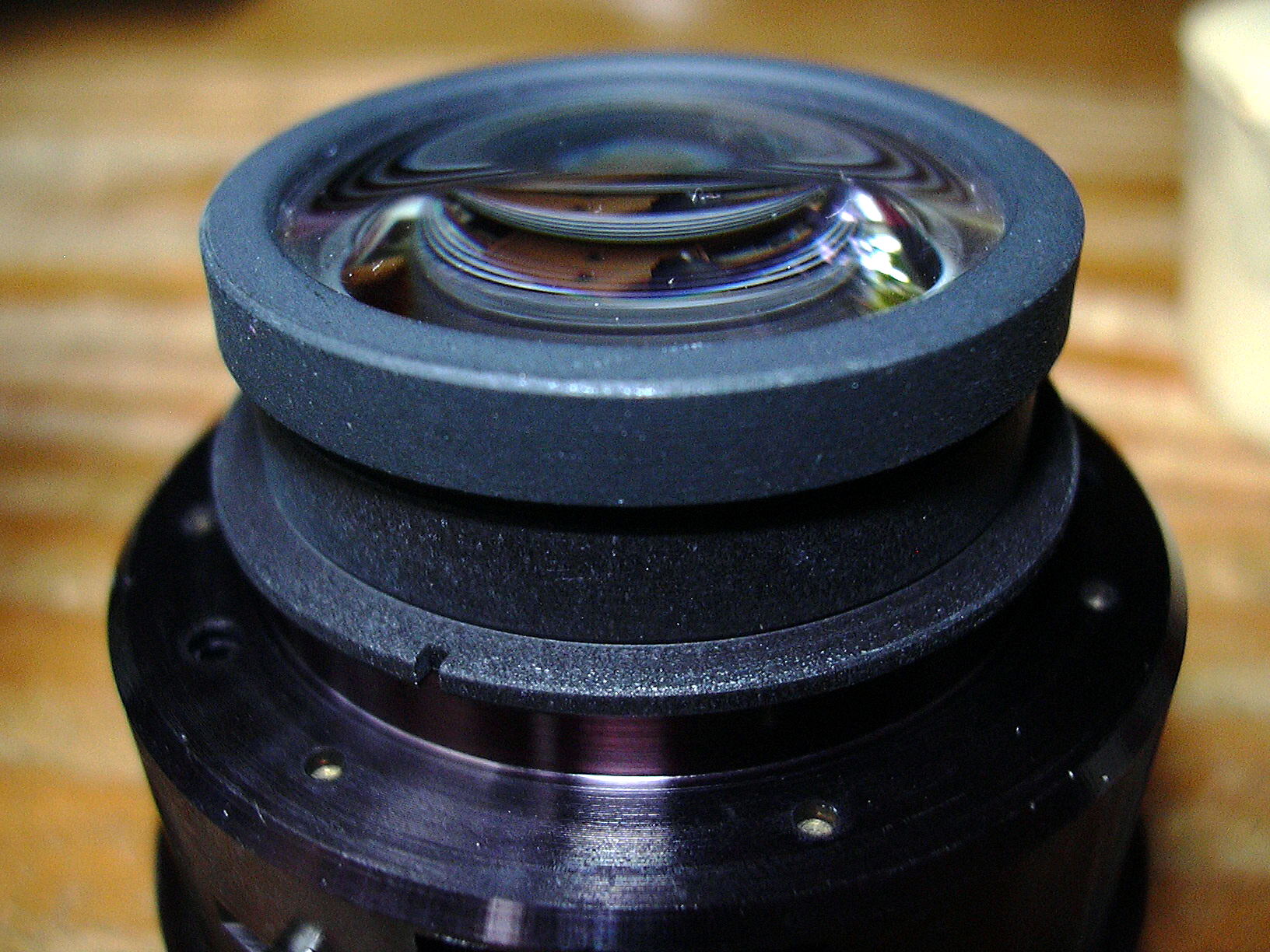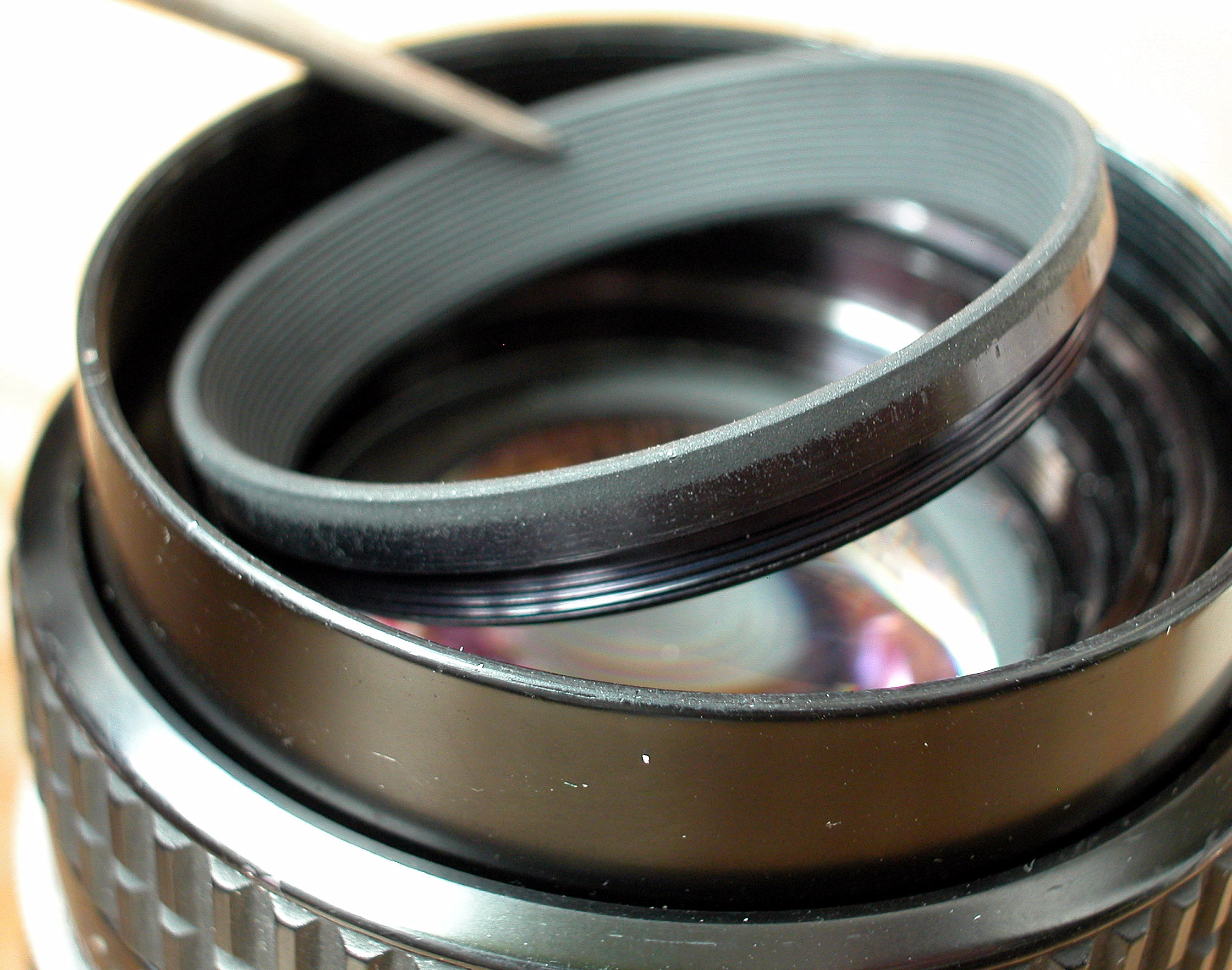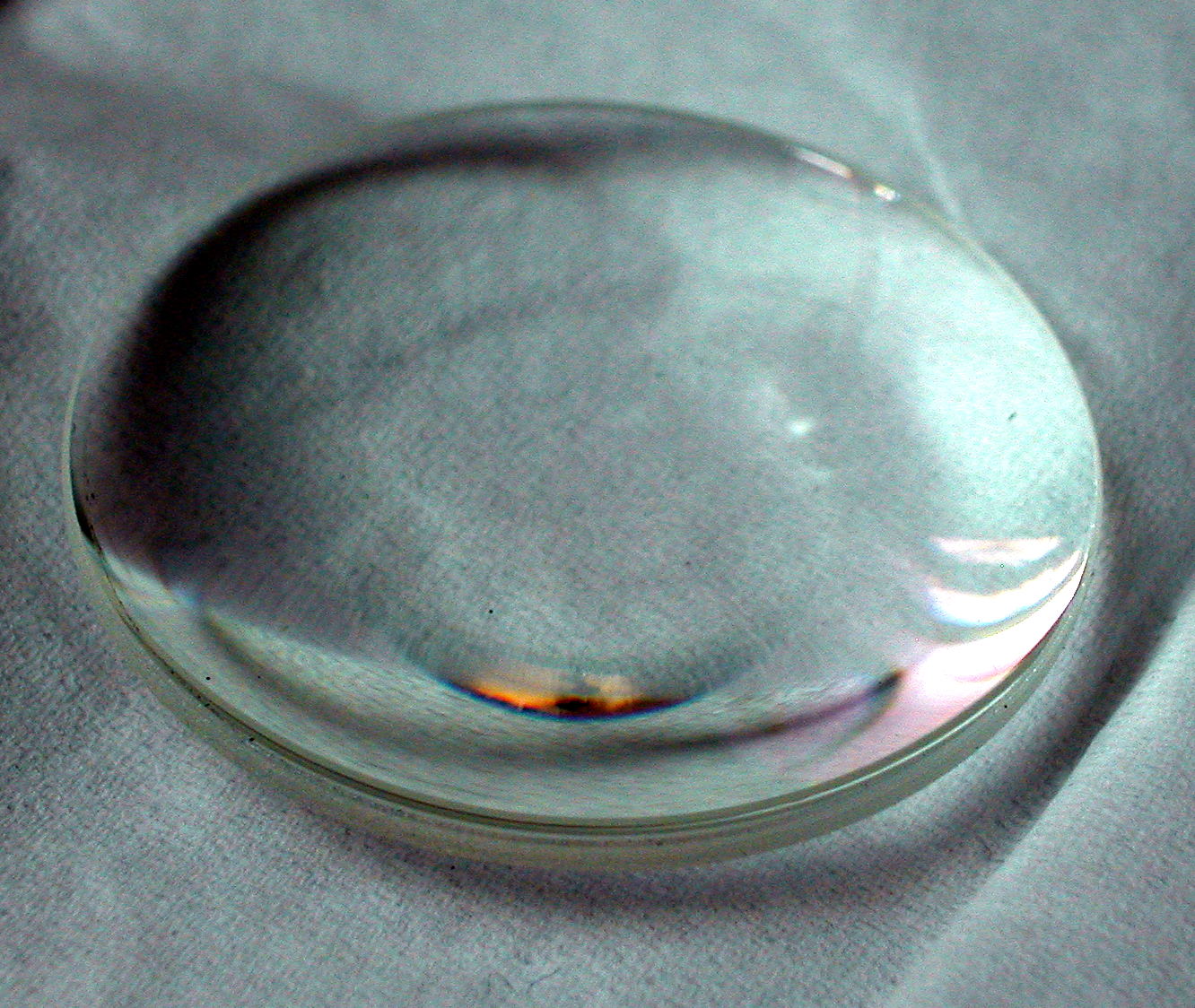Maintenance and cleaning a Nikkor-AI 1.8/50 mm.
This cute little lens was introduced early 1978. It is still in production, in an auto focus version. Since its introduction over 5.5 million lenses were produced! This lens is a very good performer, also on digital reflex cameras. It may produce very sharp images, even in macro-photography when used on a PK-ring, bellows or in reverse on any camera body. Mounted on a digital camera with the 1.5 or 2.7 crop factor (DX and CS) it may serve as a very nice portrait lens. There are various versions of this lens. The lens pictured here is the AI-version with an all-metal body and the famous SIC coating. The Series-E version is not that strong and all AF-versions should be ignored as they have a different body. BTW: The last version of the Nikkor 2/50 mm. has an identical body! To clean the lens you may want to open it. Using the right tools and patience it will be an easy job.
The back plate has three screws, of which two will come off easily; number three may be glued and need a lot of force and - above all - a screwdriver that fits 100%!
Now you may clean the lens inside and - if needed - lubricate (with a tiny drip) the helicoid focusing mechanism. To take out the lens block you have to unscrew the tiny set screw in the front ring. To get to that screw you have to turn the focus ring to the shortest possible focusing distance.
After you have unscrewed that set screw you may turn (CCW) the entire front ring. Take off that ring and let the lens block come out by catching it with your hand.
Above you'll see the lens body, the front ring and the removed name ring and the lens block.
The rear elements can be screwed off with a pair of tongs. After removing the rear group you'll have access to the diaphragm blades.
To remove fungus from the front elements you can remove that front element by carefully unscrewing the gray set ring with a rubber stop (in its center it should be a bit hollow to avoid scratching the front element) or the outer ring by using a pair of tongs, which you have to place into the two opposite notches. The latter action will bring out the entire front group of elements. Now you have access to the aperture blades. Always unscrew counterclockwise!
Be careful with the front element! Do not touch it with bare hands, use surgeon gloves. Clean it in lukewarm water. If the side has been damaged and some tiny chips of glass are missing, paint the damaged side black with flat black - fine grain pigmented - enamel paint. By doing so internal reflections may be eliminated.
|
